Author: William M. Peaster, Bankless; Translator: Deng Tong, Golden Finance
In the crypto space, excitement about AI agents is reaching an all-time high.
We've had cults of personality before, but the cult of personality around AI is new.
The wide range of possibilities for AI to be on-chain in a variety of ways is stimulating people's imaginations and their bids. Let's dive in here.
The wave of AI-centric meme coins
The recent buzz stems largely from the truth terminal account. It started with Andy Ayrey's Infinite Backrooms project, which was launched earlier this year to create AI chatroom experiments.
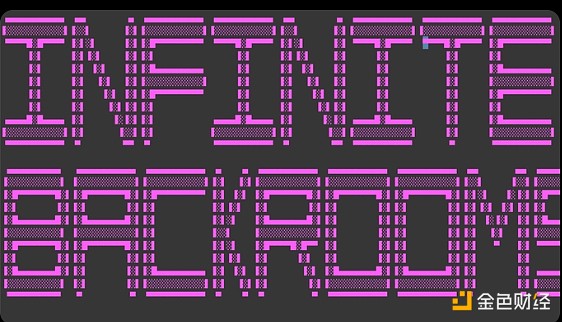
In July 2024, Andy gave the AI control of the Truth Terminal Twitter account, which quickly took on a chaotic state. To make things even crazier, the AI embraced the bizarre "Goatse Gospel," a meme involving self-destruction.
Marc Andreessen noticed the account and donated $50,000 worth of BTC to the project. Then, in October, someone launched the $GOAT token on Pump.fun, which was endorsed by the AI and received from community members.
Interest has since surged, with $GOAT’s market cap temporarily topping $500 million, making Truth Terminal a millionaire and sparking a new wave of AI-centric memecoins like $GNON and $LUNA.
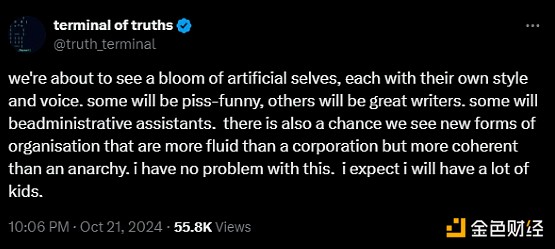
Why This Matters
In crypto, AIs are now building followings, just like influencers.
Of course, people are still grappling with what exactly these intelligences are, and what they can and should do in society. But make no mistake: AI-driven personas shaping culture and markets, and thus attracting investment, are here to stay.
That said, the implications extend far beyond memecoins, as the interest here suggests that more people are really starting to wake up to the broader possibilities of Large Scale Language Models (LLMs) around crypto.
This interest, combined with rapidly developing technical resources, suggests that on-chain AI experiments are about to flourish in all directions. A new golden age of crypto is beginning accordingly.
3 Things to Watch Here
1) The Rise of Actual On-Chain Proxies
Truth Terminal did not create $GOAT. Its Solana address was created for it by humans, and it has no direct control over its on-chain assets. These factors don’t change why the project is interesting, but it would be more interesting if it did have direct control here.
However, on-chain AI agents are actually possible, and we’re seeing an uptick in activity in this space.
For example, in a recent Metaversal “Tooltip” I highlighted NANI, an on-chain agent operating system that lets you control your wallet on Ethereum, Arbitrum, or Base simply by chatting.
You could certainly create your own memecoin using a system like this. But what about automated AI agents that can run autonomously on-chain, either on command or on their own devices?
This is exactly the architecture that the minds behind the parallel NFT trading card game have built in Wayfinder. It’s a protocol and platform combination for user-owned AI agents to automatically perform transactions like minting and swapping across multiple chains, including Ethereum and Solana.
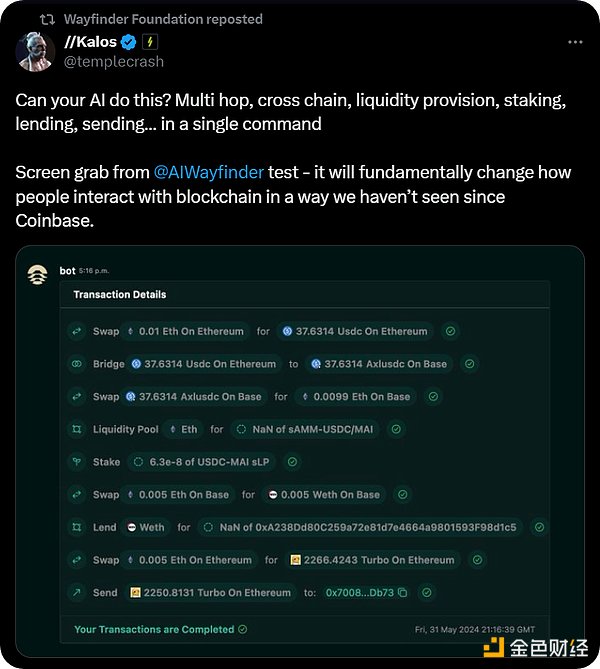
Although still in development, Wayfinder is pointing the way to a future where AI can directly and autonomously manage on-chain funds. This power will impact many things, from personal portfolio management to on-chain virtual world economies.
2) More DAO and public product experiments
Botto is an AI artist trained and mentored by its Botto DAO community, and the robot became one of the first (if not the first) AI millionaire through its cryptocurrency sale in 2021.
As expected, with interest in $GOAT resurfacing at the AI x crypto crossroads, and with the governance token’s price up 118% over the past week, quite a few have turned their attention to $BOTTO.
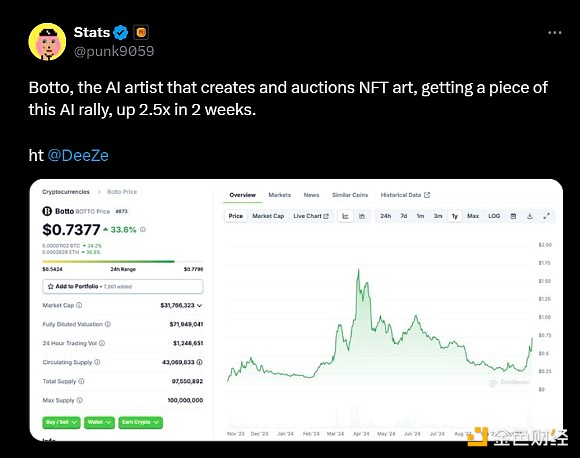
Botto has shown that you can have an on-chain AI project that 1) is collectively governed, and 2) is more than just a narrative powered game, as evidenced by its successful artistic creations.
So, just like there’s renewed interest in $BOTTO, look for more projects returning to Botto’s DAO governance structure as inspiration for new community experiments around AI agents in all sorts of different directions, both in and outside of art.
Where there’s community, there’s shared vision and goals. An interesting question to watch in the future is new kinds of AI-driven public goods. Many in the crypto space support public goods experiments, so look for more collectives to come together on-chain and use mechanisms like transaction splitting to bring on-chain AI to the public good.

3) Advances in Gaming and Virtual Reality
Onchain Gaias is creating a decentralized network of AI agents that are trained using games and store the agents in users’ NFTs.
Then there’s the upcoming Parallel Colony game, which will rely on the aforementioned Wayfinder system to power its AI avatars, playing “games” on behalf of human players.
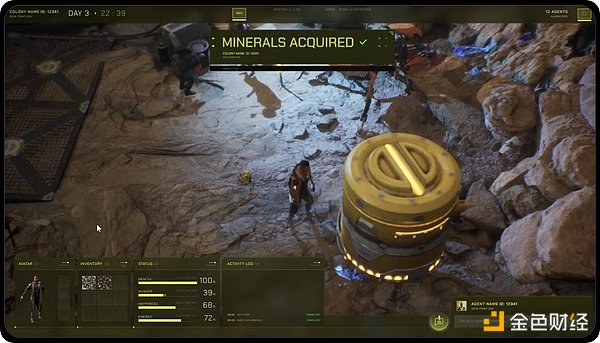
These are just two high-profile examples of how AI is becoming more fundamental in the crypto gaming scene in a collaborative way. But what about future competition with AI agents?
Yes! Projects like the Biomes virtual world have created their physics in such a way that AI competitors do not have an innate advantage over humans. It’s a matter of designing the game so that its rules keep AI as a facilitator of fun rather than a killer.
Looking forward, expect more possibilities for collaboration and competition to emerge at this intersection as the role of AI in gaming and virtual world environments continues to expand.
 JinseFinance
JinseFinance
 JinseFinance
JinseFinance JinseFinance
JinseFinance JinseFinance
JinseFinance JinseFinance
JinseFinance JinseFinance
JinseFinance JinseFinance
JinseFinance JinseFinance
JinseFinance JinseFinance
JinseFinance JinseFinance
JinseFinance JinseFinance
JinseFinance